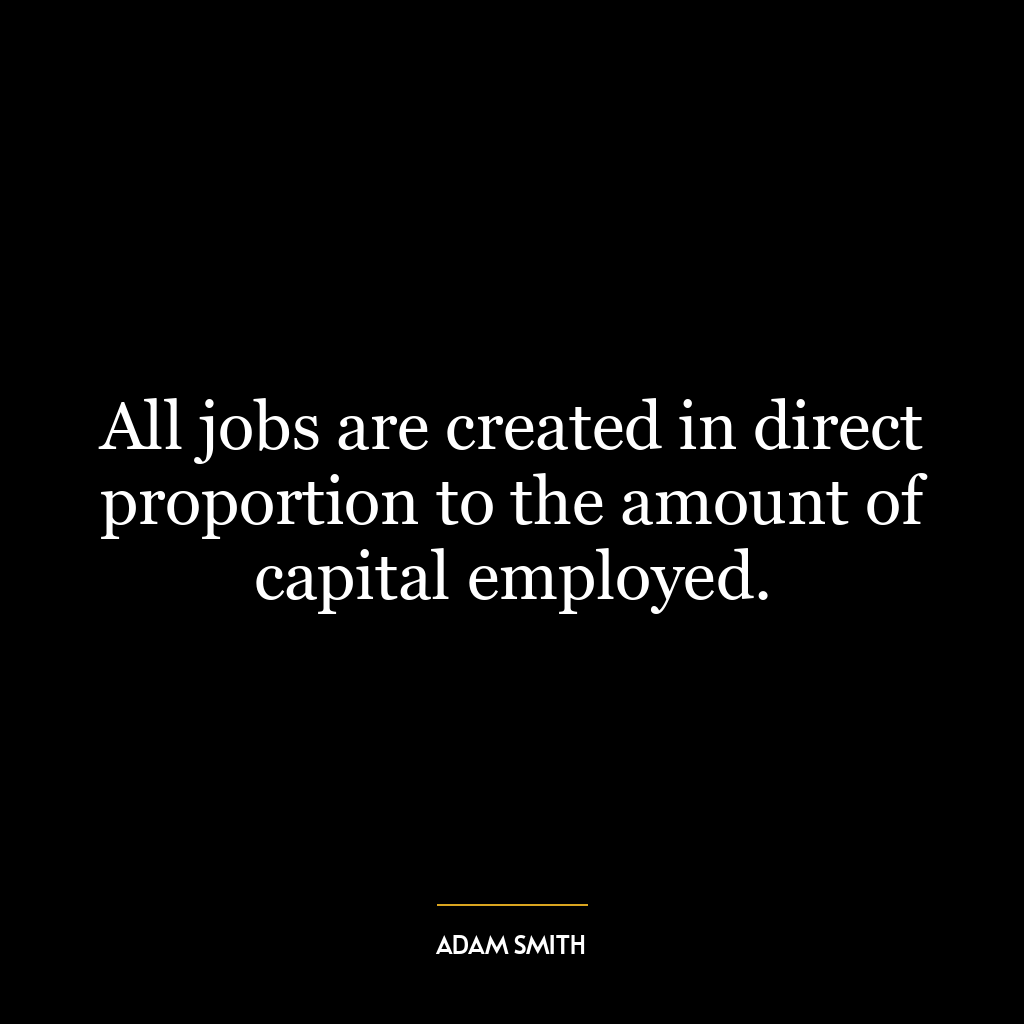All jobs are created in direct proportion to the amount of capital employed.
This quote essentially means that the number of jobs available in an economy is directly related to the amount of money or resources (capital) invested. If more capital is invested into a business or industry, it can afford to hire more employees, thus creating more jobs. Conversely, if capital is withdrawn or reduced, the number of jobs decreases as the business can no longer afford to pay as many employees.
At a simple level, consider a small business. If the owner invests more capital into expanding the business, they may need to hire more staff to handle the increased workload. Alternatively, if the owner decides to cut costs and reduce their investment, they may need to lay off employees.
On a broader scale, when governments or large corporations invest in new projects, industries, or technologies, they often create a significant number of new jobs. For example, investment in infrastructure projects like roads, bridges, or public transport often leads to job creation in construction, engineering, and related sectors.
This idea is still very relevant in today’s world. For example, in the tech industry, significant capital is often invested in start-ups and new technologies, leading to job creation. On the other hand, automation and AI, which require significant capital investment, can lead to job losses in certain sectors as machines replace human labor.
In terms of personal development, this quote suggests that investing capital, whether financial or in the form of time and effort, into learning new skills or gaining new qualifications can lead to better job prospects. For example, someone who invests in a university degree or professional training may find that they have a wider range of job opportunities available to them as a result.















